Physical Address
304 North Cardinal St.
Dorchester Center, MA 02124
Mucosal ulceration occurring within an acidic part of the GI tract ▸ it is often associated with H. pylori infection ▸ duodenal ulcers are 2–3x more common than gastric ulcers
Bulbar ulcers (95%): these are usually benign
Location: anterior wall > posterior wall
Postbulbar ulcers (5%): these are usually malignant (95%) and fail to heal on medical treatment
Location: these are usually seen on the concave border of the 2 nd part of the duodenum or within the immediate postbulbar area ▸ frequently spasm of opposite wall
Risk factors: surgery ▸ severe head injury ▸ steroids ▸ COPD
A duodenal ulcer appears as a sharply defined constant collection of barium (± surrounding oedema or radiating folds)
Postbulbar ulcer: a typical crater is seen – often with spasm of the opposite wall (± thickened mucosal folds and a narrowed lumen) ▸ scar formation may obscure the ulcer crater
Kissing ulcers: this describes two ulcers opposite each other on the anterior and posterior walls
Giant duodenal ulcer: a benign ulcer crater measuring >2 cm ▸ it is constant in size and shape and often has a sharp round or oval outline ▸ its floor may be irregular (particularly when the ulcer is penetrating an adjacent organ) ▸ due to its size it may simulate a deformed duodenal bulb or diverticulum
A ‘cloverleaf’ or ‘hourglass’ deformity: this can occur when an ulcer heals with scarring
Multiple postbulbar ulcers occur in the Zollinger–Ellison syndrome
Ulcer complications: perforation ▸ bleeding ▸ stenosis ▸ penetration of any adjacent organs
Perforation: this can be localized or ‘walled off’ with marked duodenal deformity due to the adjacent inflammatory reaction
Gastric mucosa occurring in various ectopic locations within the bowel (e.g. the duodenum, small bowel or rectum) ▸ it is found in a small percentage of normal people
Irregular filling defects (varying in size from 1 to 6 mm) seen within the duodenal cap, extending from the pylorus distally
This should be differentiated from lymphoid hyperplasia of the duodenal bulb
Serosal and mucosal herniations through the muscular wall of the duodenum (seen in 2–5% of barium studies)
It is usually an asymptomatic incidental finding (symptoms may occur due to the retention of food or a foreign body) ▸ it is a rare cause of haemorrhage or perforation
Occasionally it may contain aberrant pancreatic, gastric or other functioning tissue – it then becomes a possible site of ulceration, perforation or gangrene
Cholangitis or pancreatitis may result from the aberrant insertion of the common bile duct or pancreatic duct into an intraluminal diverticulum (with associated impaired biliary drainage)
It is usually found within the 2 nd part of the duodenum with most (85%) arising from the medial periampullary surface ▸ the diverticulum is frequently in contact with the pancreas (and may be embedded in its surface)
Duodenal ulceration with spasm or scarring may deform the duodenum, producing a pseudodiverticulum – these are deformable (unlike an ulcer)
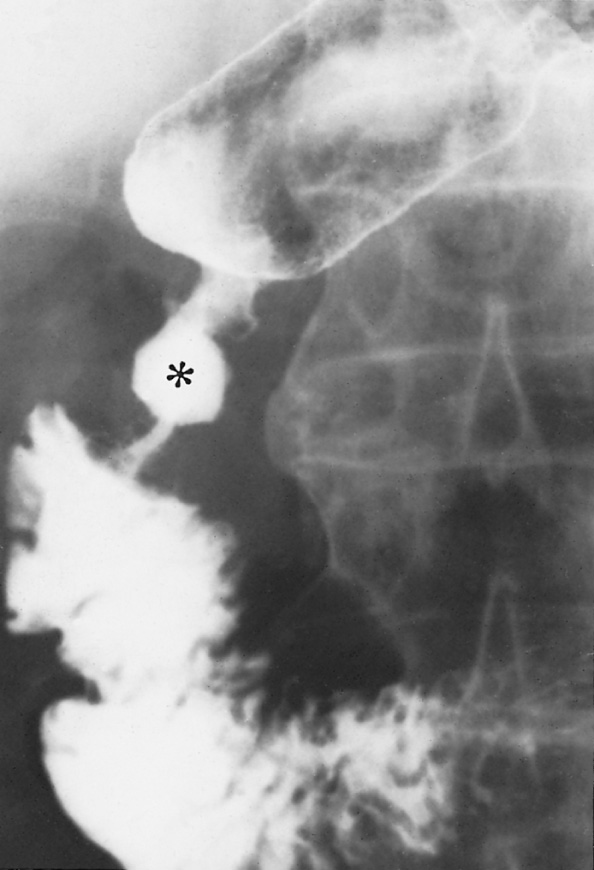
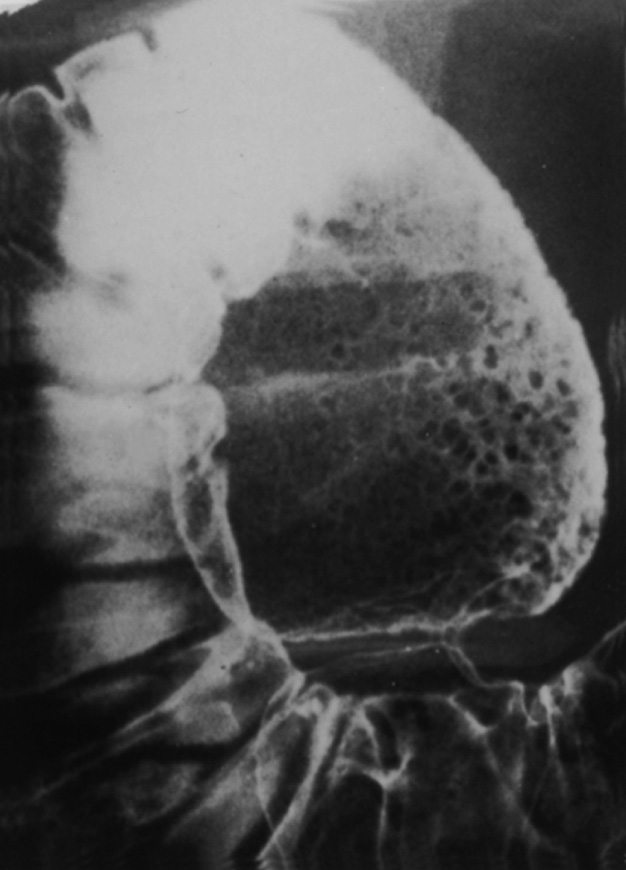
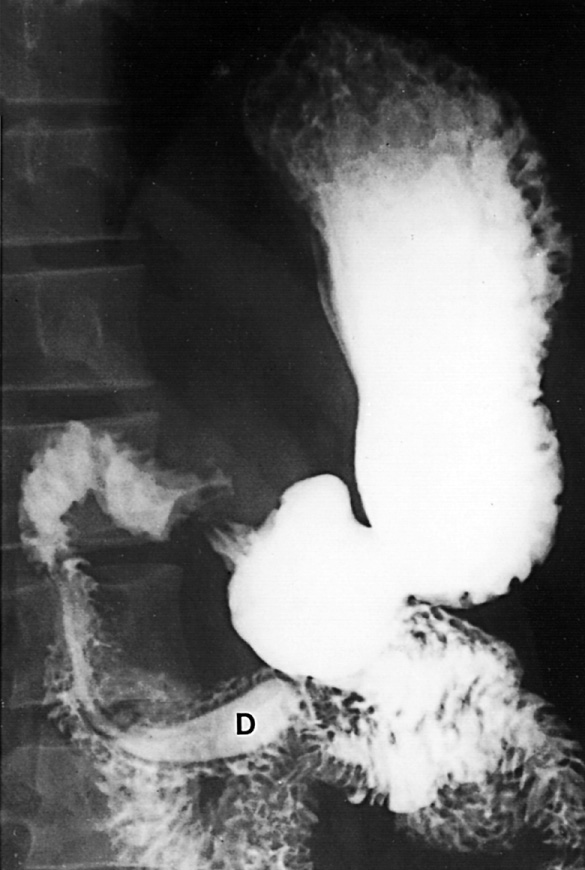
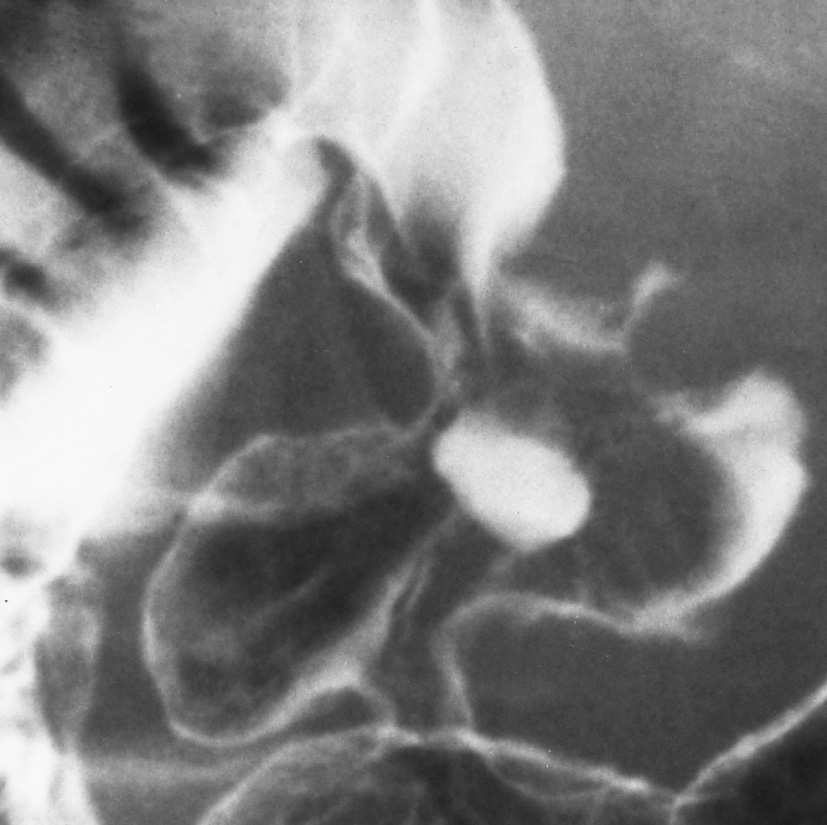
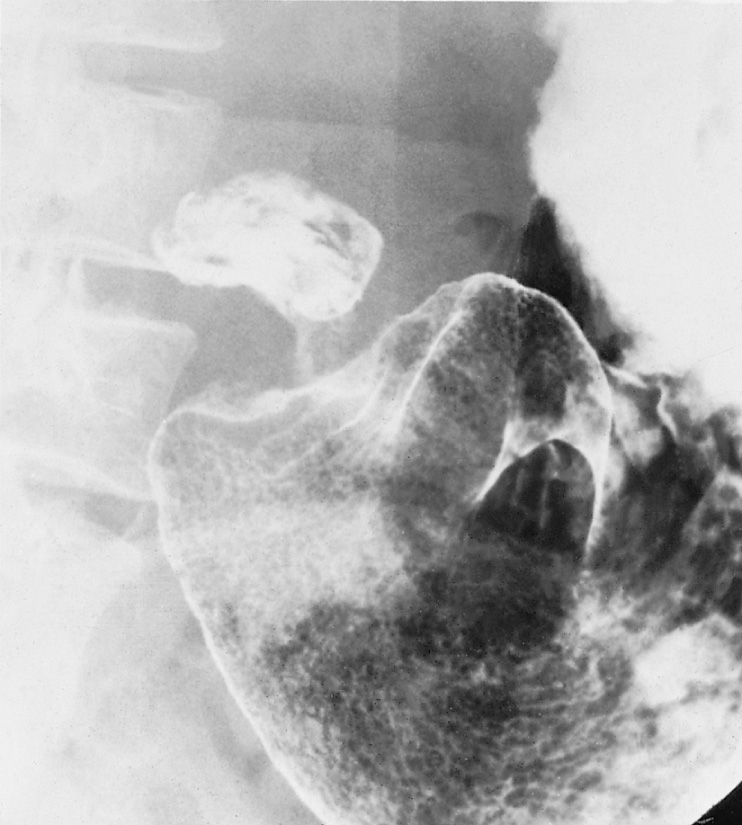
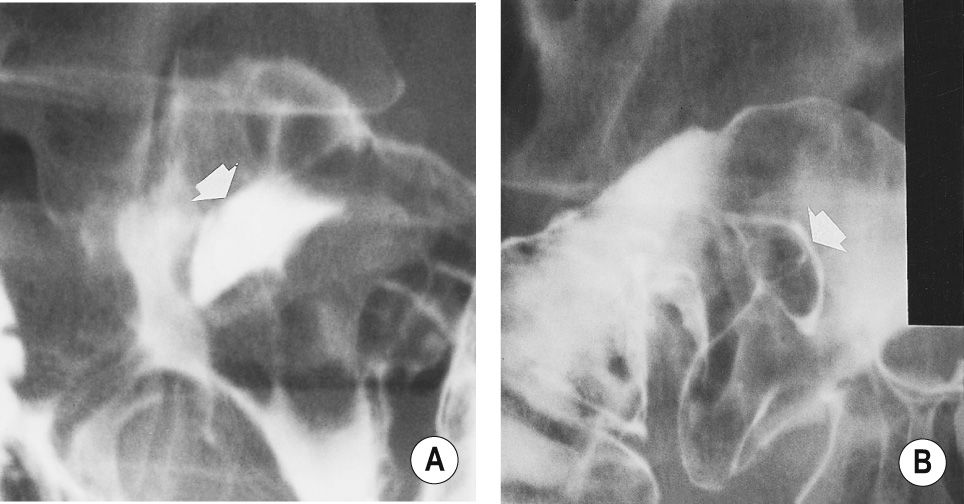
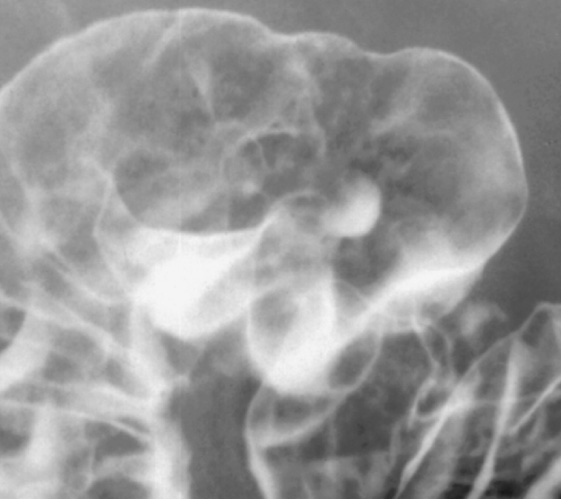
An intraluminal filling defect (3-4 cm in size) which is sharply marginated, solitary and sessile ▸ it is easily deformed by peristalsis or compression on fluoroscopy
These are single or multiple polypoid lesions within the 1 st part of the duodenum (often with a characteristic cobblestone appearance) ▸ a single Brunner's gland adenoma is occasionally seen as a 1 cm smooth polypoid mass
The Brunner's glands normally produce alkaline secretions to protect the duodenal mucosa from gastric acid
Intraluminal filling defects (<1 cm) which can be solitary, sessile or polypoid ▸ they are seen as a soft tissue mass on CT
These have a characteristic ‘cauliflower’ or ‘soap bubble’ appearance (caused by trapping of barium in the crevices between the multiple frond-like tumour projections) ▸ they are often 2–3 cm in size
This is seen as multiple small rounded filling defects of uniform size
This may be a normal finding in children ▸ in adults it can be associated with hypogammaglobulinaemia and giardiasis
Become a Clinical Tree membership for Full access and enjoy Unlimited articles
If you are a member. Log in here